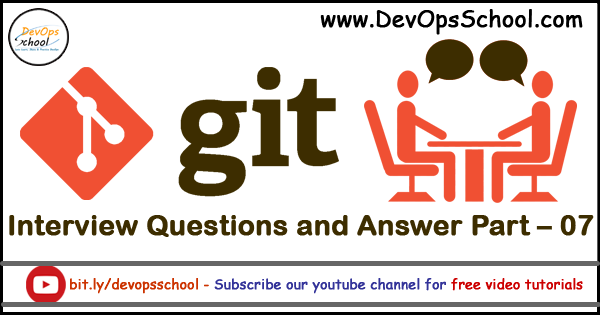
How to Compute object ID and optionally creates a blob from a file?
- git hash-object (Ans)
- git cat-file
- git update-ref
- git count-objects
How to Update the object name stored in a ref safely?
- git hash-object
- git cat-file
- git update-ref (Ans)
- git count-objects
Which commands will Reference logs or record when the tips of branches and other references were updated in the local repository.
- git log
- git reflog (Ans)
- git update-ref
- git count-objects
git stores different types of objects in .git/objects. Which is wrong objecst type?
- commit
- tree
- blob
- parent (Ans)
How to show the contents of the hashed files in .git/objects?
- git show
- git reflog
- git log
- git cat-file (Ans)
How to shows us the type of the object represented by a particular hash?
- git cat-file -t (Ans)
- git cat-file -p
- git cat-file -k
- git cat-file -type
How does “git rebase” move an existing commit?
- It just changes the parent in the commit file.
- It changes the commit’s parent and its SHA-
- None of these
- It copies over the commit to a new commit with a different parent and SHA- (Ans)
What happens to unreachable objects in the database?
- They immediately get deleted.
- You can never make an object unreachable in Git.
- They stay there forever, in case you want to retrieve them.
- They can eventually get garbage-collecte- (Ans)
What’s a “pull”?
- A “merge” followed by a “push”
- A “push” followed by a “merge”
- A “fetch” followed by a “push”
- A “fetch” followed by a “merge” (Ans)
Can an object in Git be safely modified?
- No: you might get the same SHA1 as another object.
- No: if you changed even one bit, then you’d get a different object with its own SHA- (Ans)
- Yes: you can edit the content of the file that stores the object.
- Yes: you can ask Git to generate a new SHA1 for the object.
What are the four types of objects in the Git database?
- Blobs, Trees, Commits and Versions
- Files, Directories, Commits and Tags
- Blobs, Trees, Commits and Annotated Tags (Ans)
- Blobs, Trees, Commits and Branches
What happens when you commit?
- The current branch changes, HEAD doesn’t. (Ans)
- HEAD changes, the current branch doesn’t.
- Neither HEAD nor the current branch change.
- Both HEAD and the current branch change.
Which objects are created when you merge?
- Zero or one commit and nothing else
- Merges don’t create new objects.
- Zero or one commit, and possibly new trees and blobs (Ans)
- Exactly one commit and nothing else
Where can HEAD point?
- To a branch, a commit, a tree, or a blob
- To a branch
- To a branch or a commit (Ans)
- To a branch or nowhere
Which of these is not a Git command?
- git clone
- git fork (Ans)
- git push
- git fetch
Which objects in Git have a SHA1 hash?
- Only Blobs and Trees
- Each object in the database (Ans)
- Each object in the database, and the same object can have multiple SHA1 hashes
- Only Commits
Can an object in Git be safely modified?
- No: if you changed even one bit, then you’d get a different object with its own SHA1. (Ans)
- Yes: you can edit the content of the file that stores the object.
- Yes: you can ask Git to generate a new SHA1 for the object.
- No: you might get the same SHA1 as another object
Where does Git store the names of files and directories?
- In the object database, inside the trees that point to the objects (Ans)
- In the object database, inside the blobs and trees that store files and directories
- Nowhere
- In the “.git/links” subdirectory
What happens when you commit?
- Both HEAD and the current branch change.
- Neither HEAD nor the current branch change.
- HEAD changes, the current branch doesn’t.
- The current branch changes, HEAD doesn’t. (Ans)
Which objects are created when you merge?
- Merges don’t create new objects.
- Exactly one commit and nothing else
- Zero or one commit and nothing else
- Zero or one commit, and possibly new trees and blobs (Ans)
- How to remove sensitive warning from ms office powerpoint - July 14, 2024
- AIOps and DevOps: A Powerful Duo for Modern IT Operations - July 14, 2024
- Leveraging DevOps and AI Together: Benefits and Synergies - July 14, 2024

